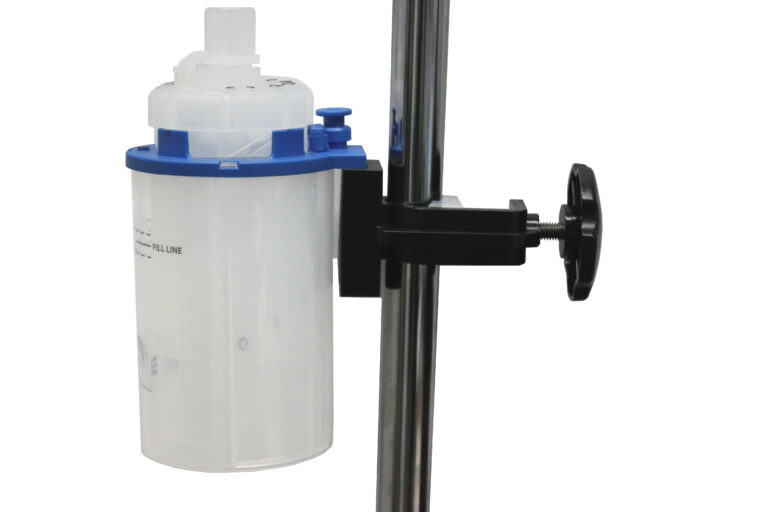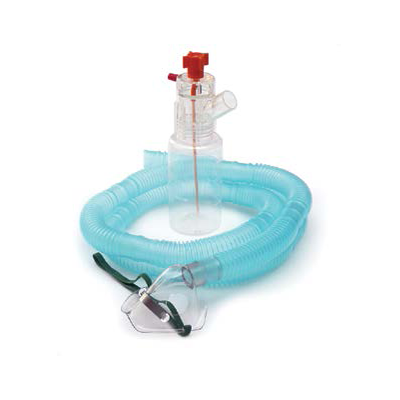Respiratory distress syndrome (RDS) is a common complication affecting premature infants, often requiring prompt and precise intervention to ensure optimal outcomes. Continuous Positive Airway Pressure (CPAP) has emerged as a cornerstone therapy in the management of RDS in newborns, offering a non-invasive approach to supporting respiratory function and promoting lung development. In this blog post, we explore the significance of CPAP for newborns, its role in addressing respiratory distress syndrome, and how it helps healthcare providers deliver precision care to vulnerable neonates.
Understanding CPAP for Newborns
CPAP is a non-invasive respiratory support therapy that delivers a continuous flow of air or oxygen to the airways, helping to keep them open and improve lung function. In the context of newborns, CPAP is used primarily to treat respiratory distress syndrome (RDS), a condition characterized by insufficient surfactant production and immature lung development, often seen in premature infants.
The Role of CPAP in Managing Respiratory Distress Syndrome
- Lung Recruitment and Expansion:
CPAP therapy helps recruit and expand the lungs of newborns, allowing for increased oxygenation and improved respiratory function. By delivering a continuous positive pressure to the airways, CPAP prevents collapse of the alveoli and promotes better gas exchange, essential for maintaining adequate oxygen levels in the bloodstream.
- Reduction of Airway Resistance:
CPAP reduces airway resistance in newborns, making it easier for them to breathe and reducing the work of breathing. This is particularly beneficial in cases of RDS, where infants may struggle to maintain adequate oxygenation due to underdeveloped lungs and increased respiratory effort.
- Prevention of Complications:
Effective CPAP therapy can help prevent complications associated with RDS, such as pneumothorax (collapsed lung), respiratory failure, and the need for invasive mechanical ventilation. By providing timely and appropriate respiratory support, CPAP reduces the risk of these complications and promotes better overall outcomes for newborns.
Precision Care with CPAP for Newborns
- Tailored Therapy:
CPAP therapy for newborns is tailored to individual patient needs, taking into account factors such as gestational age, respiratory status, and response to treatment. Healthcare providers carefully adjust CPAP settings to optimize respiratory support while minimizing potential risks and complications.
- Continuous Monitoring:
Newborns receiving CPAP therapy are closely monitored by healthcare providers to assess treatment efficacy, respiratory status, and oxygenation levels. Continuous monitoring allows for timely intervention and adjustment of therapy as needed to ensure optimal outcomes.
- Multidisciplinary Approach:
The management of respiratory distress syndrome in newborns often involves a multidisciplinary team of healthcare professionals, including neonatologists, respiratory therapists, nurses, and other specialists. This collaborative approach ensures comprehensive and coordinated care, with each team member contributing their expertise to the overall treatment plan.
Advantages of CPAP for Newborns
- Non-Invasive:
CPAP therapy is non-invasive and does not require intubation or mechanical ventilation, reducing the risk of complications associated with invasive procedures. This makes it a safer and more comfortable option for newborns, particularly those with respiratory distress syndrome.
- Early Intervention:
CPAP therapy can be initiated early in the course of respiratory distress syndrome, allowing for prompt intervention and prevention of further complications. Early initiation of CPAP therapy has been shown to improve outcomes and reduce the need for more invasive treatments.
- Improved Lung Development:
By providing continuous positive pressure to the airways, CPAP therapy promotes lung expansion and development in newborns, supporting the transition to independent breathing and reducing the risk of long-term respiratory complications.
Conclusion
CPAP therapy for newborns represents a cornerstone in the management of respiratory distress syndrome, offering a non-invasive approach to supporting respiratory function and promoting lung development. With its ability to provide tailored therapy, continuous monitoring, and precision care, CPAP helps healthcare providers deliver optimal respiratory support to vulnerable neonates, ensuring better outcomes and improved quality of life. At B&B Medical Technologies, we are committed to advancing neonatal care through innovative solutions like CPAP for newborns.

